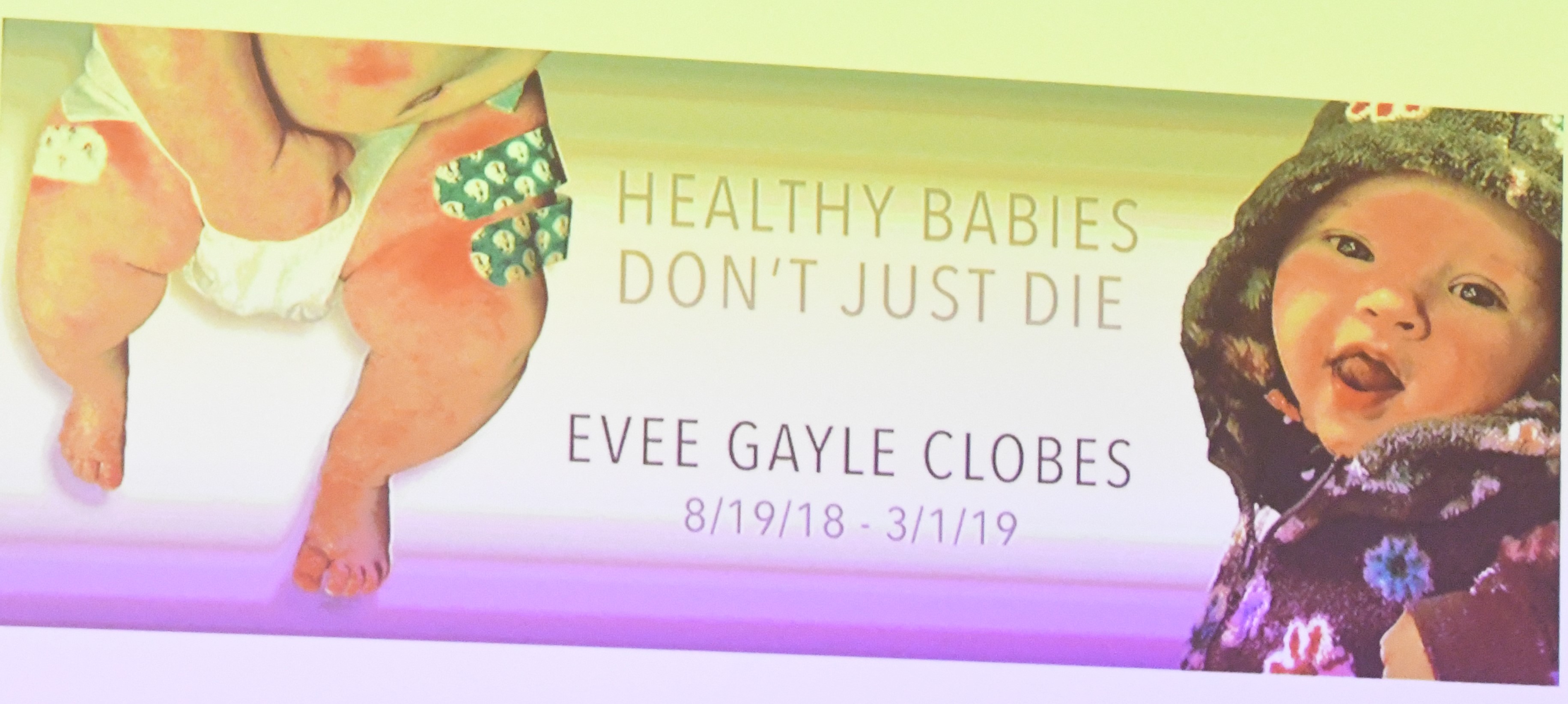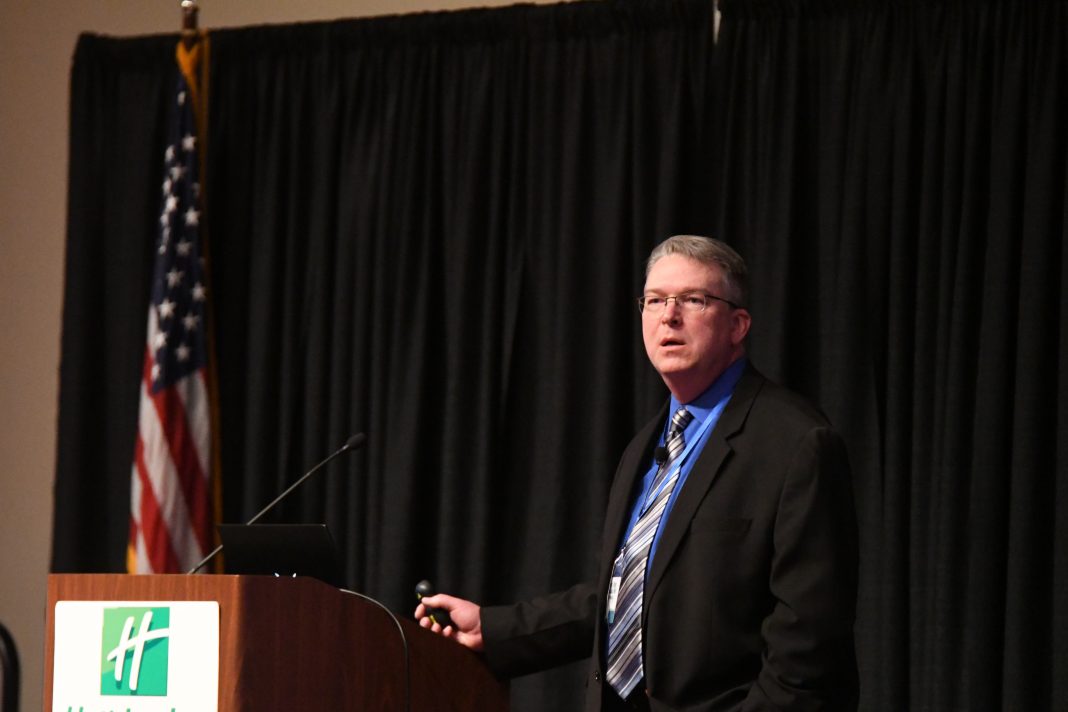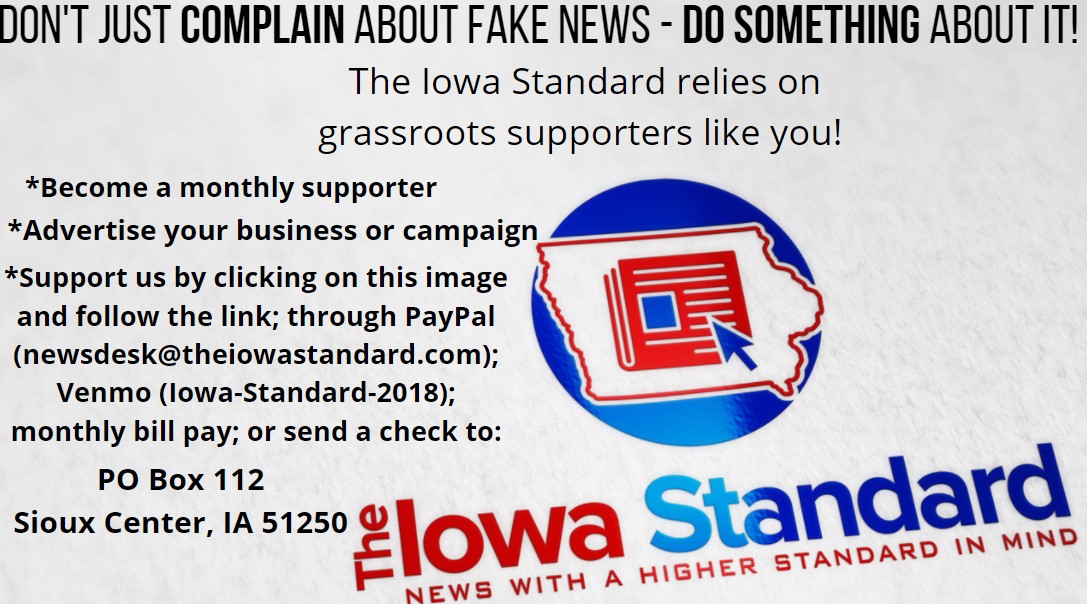Dr. Bob Zajac spoke Saturday at the Empowered to Action 2019 Conference hosted by Informed Choice Iowa. He told those in attendance he was a previous vaccine bully.
He discussed how doctors finish medical school with the thought of having just inheriting a wealth of knowledge and being infallible.
“Part of that struggle is realizing, if I’m a doctor, if I just invested the last seven years in medicine, how would you not just do what I tell you to do,” he asked. “Even worse than that, you have 30 minutes of training in everything. You’re not good at anything until you really start to specialize. I actually suck at almost everything, but I excel in vaccines.”
Zajac made clear he wasn’t providing medical care to anyone, he was only taking advantage of the Constitution and his First Amendment right to protected free speech.
Doctors, he said, are trained to believe vaccines are safe and the greatest advancement in health care. Doctors are told in medical school that you’ll become immortal if you vaccinate, if you don’t all the babies in the world will die, greatest thing ever invented.
Doctors are not trained on potential risks. They are told about the iron lung of Polio, the kid bent over backward with tetanus, pictures of small pox.
“That’s all true,” he said. “That all happened in our history, but we didn’t learn anything about being a doctor for me in the year year 2003 and what I need to know about vaccines. They didn’t teach us that. They certainly didn’t teach about the risks.”
In fact, it wasn’t until Zajac was studying for his MBA that he realized there’s a law that protects the vaccine industry.
“I wasn’t studying medicine when I realized (that),” he said. “I was blown away that they never told us that.”
With vaccines to address 16 diseases, Zajac noted there are 2,984 infections we don’t have vaccines for.
“Whatever you do for the 2,984 things that don’t have vaccines do for the 16 that we do and you’ll probably be OK,” he said.
He talked about the illness burden in the U.S. based on CDC data from 2015-16. Some cases aren’t reported simply because doctors won’t likely consider it for diagnosis if someone is vaccinated against a certain illness.
“If you’re not vaccinated, then any illness you have is probably the plague until you remind the doctor the plague isn’t on the vaccine program,” he quipped.
Zajac said he’s often told not to touch Polio because people will tell him a generation ago, their mom or their dad — for sure their grandma or grandpa, lived through that and it was very, very scary.
“Just like today there’s fear that drives business,” he said. “And public health, thank goodness for the Department of Public Health. They keep us safe. We wash our hands. We don’t swim in our own poop any more, which is a wonderful achievement. We have medicine when we need it. One of the greatest advancements in health care is we quit recommending mercury for your teething baby. We don’t smoke in the exam room telling you cigarettes are perfectly safe. The science is clear. Trust me, I’m a doctor.”
He talked about the Hepatitis B vaccine.
“People who are at risk for Hepatitis B have predominately, in our country, not come in for health care that would help them,” Zajac said. “Like many other diseases we start vaccinating people who are at least in in the office to drive down the disease rate for people who are not willing to come in. That’s fine. If that’s a benefit for you to do the vaccine that really might not have a direct benefit to your baby for the greater good of somebody else who doesn’t come into the doctor, that’s fine. But let’s quit pretending like your baby in the fourth or fifth breath of life is requesting IV drugs or sexual activity. Hepatitis B is a population issue.”
Zajac said he’s not convinced there aren’t more cases of measles than what is reported.
“I’m not sure that everybody who gets measles knows they have measles,” he said. “Doctors are not trained to recognize measles any more. We would typically say ‘oh you have pink eye. You have a runny nose, oh and you do have a fever, and now you have a rash — I think you have a virus.’ We get to charge $200 for that, isn’t that amazing.”
Zajac talked about patients coming down with measles due to the vaccine. Several of the measles cases were vaccine strain, meaning someone got the vaccine and gave measles to somebody else.
“We don’t talk about it as much,” he said. “Then it’s just a reaction.”
Zajac spoke positively, somewhat, of the Chicken Pox vaccine.
“Chicken pox vaccine works,” he said. “The trade off for the population is everybody is going to get shingles 10, 20, 30 years earlier. If you get chicken pox or get the shot, the virus is in your body and it’s in your body forever. When your immune system decreases, the re-manifestation of chicken pox is shingles. You’re all going to get it if you had natural chicken pox, you’re all going to get it if you got the vaccine. The only people not going to get shingles are the ones who neither had the vaccine nor had the disease.”
“I think we have the highest or second-highest rates of shingles in the world right now. We have a shingles vaccine, that’s wonderful, made by the same people who made the chicken pox vaccine.”
Later he talked about the risks and benefits of vaccines.
Benefits discussed are often creating antibody response, decreasing severity/duration, decreasing transmission, decreasing the disease burden and protecting vulnerable people.
“We’re supposed to say the benefits are huge,” he said. “Remember, in medical training everyone in the world is going to die without vaccines.”
The risks are minimized.
One in a million. Maybe you really just have a fear of needles. A sore arm, it’s OK if there’s a reaction. It’s normal. Just take some Tylenol.
“The risk is probably bigger,” Zajac said. “How do we know the risk is bigger, because of all your vaccine-injured kids. The ones we know about, the ones we don’t know about. The risk is probably bigger.”
And the benefits, while valid, perhaps aren’t as big as we think.
He talked about the ingredients in vaccines — aluminum, formaldehyde, aborted fetal tissue, monkey kidney cells, polysorbate 80, neomycin, MSG, mercury…
“I used to be able to do 85,” he said. “Most people checked out at 15 or 20.”
He said vaccines are required at two, four and six months because they don’t work at two, four and six months. The immune system is mostly formed after one year.
“At the 15-month mark, DTaP now you have a really good immune system response,” Zajac said.
He noted many of the families who use his practice are on an alternative schedule.
Zajac became personally invested in the issue while his wife was pregnant with their daughter. He said he devoted one hour a day for a year to studying vaccines.
“I don’t even know all the risks and I’ve been obsessing on this issue since Bethany was born, and even before,” he said.
Again, he acknowledged, benefits exist. Perhaps there’s a personal benefit or a benefit for a child or for a family. Some consider the benefit of being able to utilize resources, such as daycare or preschool, as enough of a benefit to vaccinate their children.
“In Minnesota they’re kicking kids out of daycare if they haven’t had their vaccines,” he said.
So, maybe folks want to contribute to the greater good of society. Maybe they want to vaccinate even though there is no direct benefit for them, but for somebody else’s kid who can’t get vaccinated.
“I would suggest that other child is at risk of the other 2,999 things, not just the one vaccine,” he said. “But that’s for you to decide.”
What people aren’t told and informed about are the risks of vaccines. The CDC is working to restrict exemptions.
If a previous child died due to an allergic reaction, the next child won’t qualify for a medical exemption. Immunodeficiency, autoimmunity — it won’t count for the CDC.
“The CDC decides, even if they’re not medical doctors, they get to decide what the exemptions will be,” Zajac said. “I can see the benefit side… but I don’t think they’re as good as people say they are. I don’t think they’re saving your life. I don’t think that your shots are going to save anybody else.”
He said there are 200 cases of leprosy every year in America. But there is no vaccine. There’s no herd immunity.
“We just tell you ‘hey, you have leprosy, stay home. Here’s an antibiotic,'” Zajac said. “Maybe, just maybe, we don’t need herd immunity and vaccines for everything.”
The risk-benefit discussion should be an individual decision that is between an individual and their doctor who should be required to have unbiased training (which he said does not exist), that is not sponsored or manipulated by industry.
The 1986 National Childhood Vaccine Injury Act protects vaccine manufacturers from lawsuits.
“The only people you can’t sue are the ones who just hurt your kids — the vaccine industry… We need a public opinion and I think that we need the legal system to have full disclosure,” he said. “Why is Monsanto and Roundup finally in the news, because they finally got into the courts and we finally can look at both sides of the story.”
Zajac talked about the need for vaccine information statements to be handed out before vaccines are given. Typically these are double-sided.
“They’ll tell you the benefits of the vaccine — vaccines are saving your life, before the vaccine was present, in 1920 people used to die from this stuff. Thanks to vaccine, now you won’t,” Zajac said.
Giving the paper and the vaccine results in $38 for the doctor. But someone who gets a paper and wants to sit and talk about it and then decides not to do the vaccine, results in nothing.
“There’s a huge financial incentive to not have you ask any questions and just do what I say because I’m a doctor,” he said.
Zajac said he believes the Hib vaccine is the cleanest of all vaccines.
“It has Hib and like salt and a little bit of sugar,” he said. “It’s probably the cleanest vaccine. If all vaccines could be this clean, I bet you wouldn’t feel so bad about that shot. You could still have a reaction to Hib, but it’s the cleanest version of a vaccine that I think is available.”
In contrast, he called the HPV vaccine the highest risk.
“Taken off the market in every country other than ours,” he said. “Why? Because you can sue them in other countries, you can’t sue them here.”
Yet a review of the vaccine information statement reveals nearly identical risks and benefits.
“HPV is a challenging vaccine,” Zajac said. “I just don’t feel good that we even have it in our clinic. We offer vaccines for families who choose them. I’m not allowed to talk people out of it. I always ask if they have questions.”
Package inserts often include information on the effects, but fail to provide any long-term information.
“There’s a possibility that what we did in the four-day study might not represent what happens once you start giving it to 4 million kids. You think? You think four days with 2,000 people might not give us all the reactions,” he asked. “So four days, 60 percent were drowsy and fussy. But, as a selling point, only 2-4 percent had severe drowsiness or fussiness — like the kind where you couldn’t wake your kid up or wouldn’t stop crying. And on the package vaccine for the Hib vaccine, which I just said is probably the safest, only 1 in 2,500 had seizures with no other attributable cause.”
Seizures, he said, are probably transient, “meaning it’s probably going to stop.”
Same thing for the HPV vaccine, he said. 2.3 percent of the population had some severe adverse events. They expanded the reporting period out up to 48 months after the last dose. Ten deaths occurred.
It’s all on the package insert.
“This is a big list of things that are medical issues that would make any doctor cringe if we knew that these were potential risks for this vaccine,” he said. “Just, let me summarize, it’s all bad. Nothing good on that list.”
The Vaccine Adverse Event Reporting System (VAERS), which was created in the 1986 injury act, has awarded more than $4 billion. And only one percent of reactions are believed to be reported.
According to the VAERS, all vaccines had resulted in 819,264 reports. There have been 7,556 VAERS deaths. There have been 21,303 National Vaccine Injury Compensation Program (NVICP) claims filed. Of those, 6,947 were awarded.
Keep in mind, those numbers are based on only one percent of adverse events being reported. Zajac asked what would happen if 100 percent events were reported.
That $4 billion turns into $400 billion. All of those others numbers experience a significant jump as well.
“For a safe, effective product that we shouldn’t even talk about,” Zajac said.
Often, Zajac said, he hears from people that they were vaccinated and they turned out fine.
“If you’re a 70s kid, an 80s kid or maybe somewhat 90s, you got seven shots,” he said. “I know what your risk was. Not the 73 that we’re going to give to your baby today. Some are being mandated without any choice.
“Maybe they’re not as safe as you’re lead to believe. And guess what, if they’re not as safe as you’re led to believe, maybe you should have a choice. I’m part of group called Physicians for Informed Consent, we’re against mandating vaccines because when there’s a risk, you have to have a choice.”
Zajac asked what would happen if the vaccine industry would be held accountable for the injuries to our children. What if doctors were held accountable. What about elected officials, he said.
“If you pass a law that hurts children, you should be held accountable,” he said. “But what if they don’t even know. So maybe we start by having them know.”
Finally, he said, what if parents don’t even know.
“I haven’t met a single parent yet who had a vaccine reaction who feels like the benefit of the shot was worth the reaction they had,” Zajac said.
It’s important the information regarding the risks makes it to moms and dads.
“I can only talk for so much longer and I’m not afraid to talk any more,” Zajac said. “What if the doctors knew? Well, that’s why I’m here. This is why I’m here today, putting my license at risk today. If doctors can learn something today, that’s why I’m here. What about elected officials? That’s why I’m here. What if one parent pauses and thinks about their child? That’s why I’m here today.”
He then listed off patients who suffered varying effects from regressed autism to tics or behavior changes to eczema to allergies to seizures.
“All the parents who trusted me and to care for their vaccine-injured children on that journey,” he said. “It is honoring. I’m so thankful to be part of that team. I was arrogant and ignorant and didn’t know what I was doing and took a while to believe what I was actually seeing. So other doctors can know that it is OK to speak out. That’s why I’m here today.
“And for little baby Evee, that’s why I’m here today. Little baby Evee died 36 hours after her six-month vaccines.”










